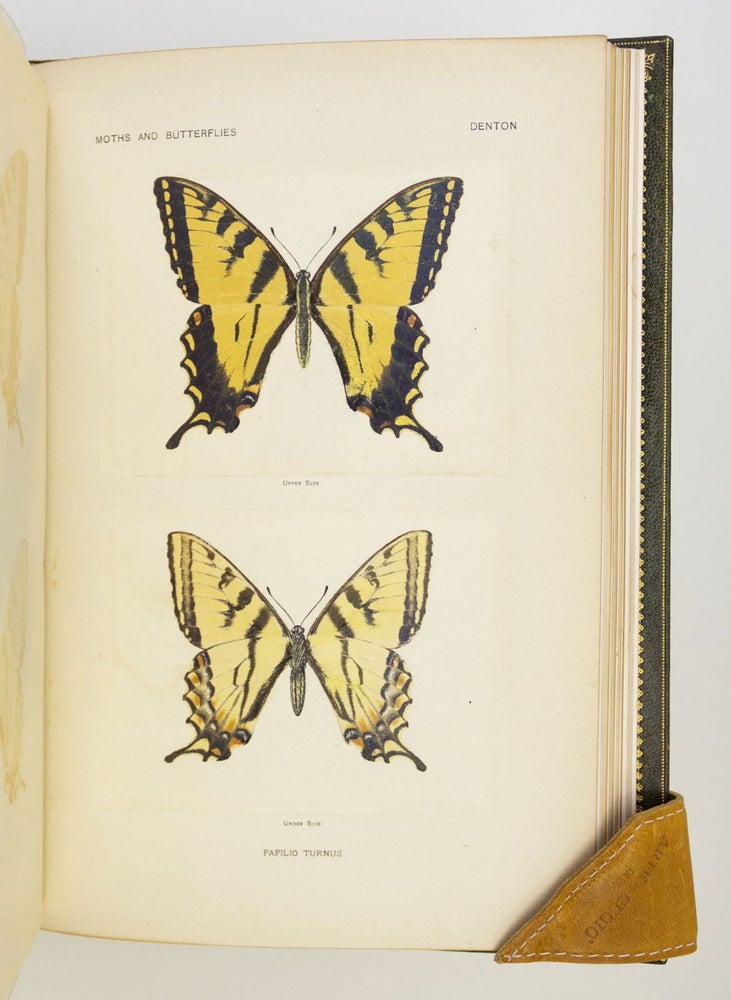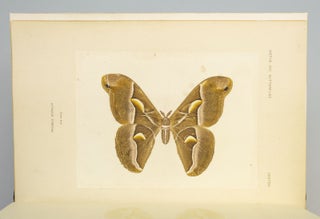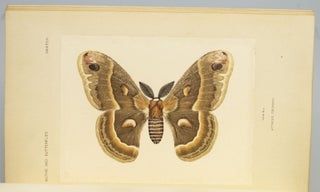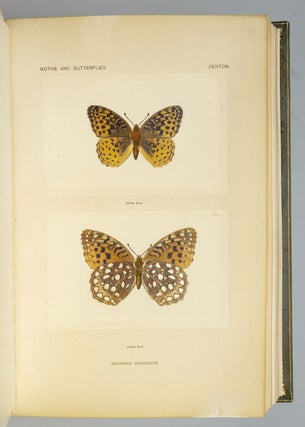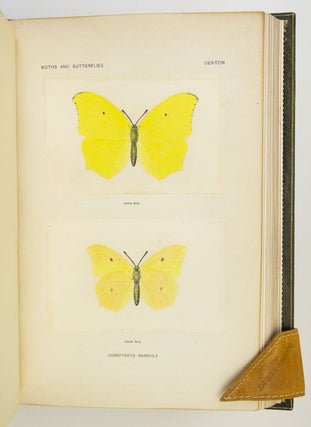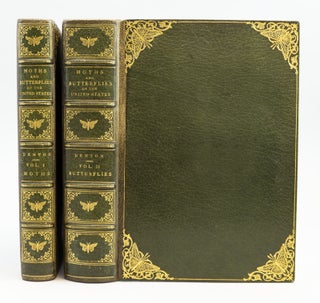AS NATURE SHOWS THEM, MOTHS AND BUTTERFLIES OF THE UNITED STATES EAST OF THE ROCKY MOUNTAINS.
(Boston: J. B. Millet Company, 1900). 256 x 181 mm. (10 x 7 1/8"). Two volumes. No. 306 OF 500 COPIES.
Very attractive contemporary olive green morocco, covers with gilt border incorporating an elaborate cornerpiece design of a butterfly; raised bands, expertly rebacked preserving original backstrips, spines gilt in compartments with lacy frames enclosing a large central butterfly, gilt turn-ins, marbled endpapers, leather hinges, all edges gilt. With more than 400 photographic illustrations and 62 ACTUAL ENTOMOLOGICAL TRANSFERS FROM LIFE, all but one of the latter with original tissue guards. Bennett, p. 33; McGrath, p. 177; Nissen ZBI 1079; Reese, "Nineteenth Century American Color Plate Books" 107. ◆Spines faintly sunned, two leaves with minor thumbing, one corner crease, otherwise AN EXTREMELY FINE SET, the very appealing bindings quite lustrous and entirely sound, and the text and plates clean, fresh, and bright, with virtually no signs of use.
This is a collection of butterfly and moth illustrations printed by direct transfer from the insects, the creation of a leading innovator in the display of lepidoteral specimens. Sherman Foote Denton (1854-1937) came from a family of amateur naturalists who managed to turn their favorite pastime into a global business. Denton patented a butterfly mount that captured a specimen on a white plaster tablet, where it could be pressed under glass, avoiding the mess, smell, and eventual degradation of butterflies and moths mounted on paper using pins. The present publication presents a collection of specimens in a far more portable form that still preserves the color and detail of the insects' wings. The author collected, by his own count, more than 50,000 specimens to produce the color plates for this limited edition. He explained his process: "The colored plates, or Nature Prints, used in the work, are direct transfers from the insects themselves; that is to say, the scales of the wings of the insects are transferred to the paper while the bodies are printed from engraving and afterward colored by hand." Since each specimen could be used only once, it was necessary to obtain 500 perfect specimens of each species pictured. The effort and expense prevented larger runs of such publications, and Reese observes that "new methods of printing color, often too difficult to be practical, were sometimes undertaken by enthusiasts." (CJW1901)
Price: $4,800.00

